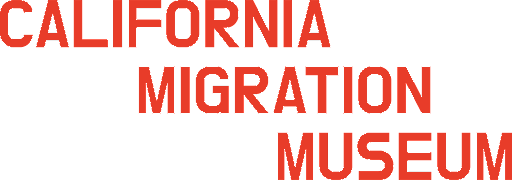
Practically Perfect on Paper: Birthright Citizenship in the Chinese Community in California
Chinatown: Lesson 3
Wong Kim Ark
Chinese Exclusion Act
Paper Sons
Topic
1. Understand the centrality and importance of San Francisco's Chinatown.
2. Explore how communities develop through migration.
3. Learn about the relationship between Reconstruction, 14th and 15th Amendments and the Chinese communities in California.
Objectives
9th to 12th Human Geography, World, and U.S. History
On level through Advanced Placement and the International Baccalaureate
Grade
How does the concept of birthright citizenship get applied in American society through Chinese Migration?
Essential Question
Overview
The basis of this lesson relates to information found in Scene 2: Look Tin Eli's Pie, Scene 3: The Longest 60 Seconds, Scene 5: Look Up, Scene 6: Fighting Back, Scene 7: The Twin Towers from the CMM Chinatown Walk. This lesson plan leads students through the idea of birthright citizenship and the problematic application of the principle, while looking at ways the Chinese community sought to navigate the systemic racism.
Based on English Common Law, the principle of jus solis or "right of soil", often called birthright citizenship, recognizes citizenship based on place of birth, unlike in the Classical Era when Romans believed in the principle of jus sanguinis or "right of blood" which recognized citizenship came from a person's parents. In the United States federal law and the Constitution are built upon the foundations of English common law and in 1790 the U.S. Congress passed the Naturalization Act of 1790 which developed the first rules around citizenship and birthright citizenship.
In 1857 The U.S. Supreme Court issued their decision Dred Scott v. Sanford in which the majority denied citizenship to African Americans under the 5th Amendment. Outraged Republicans would later begin work on what would become known as the Reconstruction Amendments after the end of the Civil War. The 13th Amendment (1865) ended enslavement outside of incarceration, the 14th Amendment (1868) overturned the Dred Scott ruling, and the 15th Amendment (1870) gave all male citizens the right to vote.
Designed to address the issue of the enslavement these Amendments acknowledged the citizenship of African Americans born enslaved who now found themselves freed in the aftermath of the American Civil War. Contained within the 14 Amendment the Citizenship Doctrine Clause enshrined birthright citizenship in the U.S. Constitution creating a conflict when in 1882 Congress passed the Chinese Exclusion Act effectively banning Asian migration and denying Asian Americans born in the U.S. their right of birthright citizenship.
Chinese Exclusion Act (1882)
Materials
Students will need devices, pen and highlighter.
Key Ideas
Birthright Citizenship, Reconstruction, Chinese Exclusion Act, Paper Sons
Assessment
Students will engage in a debate over birthright citizenship.
Lesson (75 Minutes Total):
Wong Kim Ark’s Departure Statement, November 5, 1894
-
Utilizing devices students should read and explore the "Paper Sons" page from the California Migration Museum.
Student Question: Why would Low Tim need to become a Paper Son to be able to live and work in California?
-
Have students read through and annotate Dr. Martha Jones's interview with the New York Times regarding birthright citizenship.
-
Have students self-identify as an extrovert or introvert and separate into two groups.
Note: In allowing students to separate themselves as such, it allows for a richer classroom discussion by giving the introverts time to process and prepare while the extroverts can jump right into the discussion. This entire activity can be modified to fit the teacher's classroom norms.
ROUND 1 (20 minutes)
Group #1 Extroverts: Utilizing devices students will take two to five minutes to briefly read through the United States v. Wong Kim Ark (1898) . After reading through the facts of the case have students gather in a circle and ask the following two questions: Should the United States follow the principle of birthright citizenship? Why did the United States ignore the 14th Amendment regarding the Chinese?
Group #2 Introverts: Have students complete a Document Based Worksheet while the extroverts discuss.
ROUND 2 (20 minutes)
Group #1 Extroverts: Have students complete a Document Based Worksheet while the introverts discuss.
Group #2 Introverts: Utilizing devices students will take two to five minutes to briefly read through the United States v. Wong Kim Ark (1898) decision. After reading through the facts of the case have students gather in a circle and ask the following two questions: Should the United States follow the principle of birthright citizenship? Why did the United States ignore the 14th Amendment regarding the Chinese?
-
Revisit the opening question about Low Tim (“Why would Low Tim need to become a Paper Son to be able to live and work in California?”) but ask students to briefly write on a notecard as an exit ticket whether they think Low Tim and the Paper Sons were justified in the ways they utilized the missing records to circumvent the U.S. ban on migration and naturalization, and the denial of birthright citizenship.
Note: Teachers can easily adjust this assignment by assigning the article for homework and lengthening the class discussion. They can also have students read about Wong Kim Ark for homework and fill in the Supreme Court Case Worksheet before class. Teachers can also trade out one of the articles for the article about how the United Kingdom has stripped birthright citizenship from citizens for certain offenses.
Standards:
Historical and Social Science Analysis Skills (p727-728)
-
Students compare the present with the past, evaluating the consequences of past events and decisions and determining the lessons that were learned.
Students analyze how change happens at different times; understand that some aspects can change while others remain the same; and understand that change is complicated and affects not only technology and politics but also values and beliefs.
Students use a variety of maps and documents to interpret human movement, including major patterns of domestic and international migration, changing environmental preferences and settlement patterns, the frictions that develop between population groups, and the diffusion of ideas, technological innovations, and goods.
Students relate current events to the physical and human characteristics of places and regions.
-
Students identify bias and prejudice in historical interpretations.
Students construct and test hypotheses; collect, evaluate, and employ information for multiple primary and secondary sources; and apply it in oral and written presentations.
-
Students show the connections, casual and otherwise, between particular historical events and larger social, economic, and political trends and developments.
Students recognize the complexity of historical causes and effects, including the limitations on determining cause and effect.
Students interpret past events and issues within the context in which an event unfolded rather than soley in terms of present day norms and values.
Students understand the meaning, implication. and impact of historical events and recognize that events could have taken other directions.
Students analyze human modifications of landscapes and examine the resulting environmental policy issues.
-
10.4 Students analyze patterns of global change in the era of New Imperialism in at least two of the following regions or countries: Atrica, Southeast Asia, China, India, Latin America, and the Philippines.
1. Describe the rise of industrial economies and their link to imperialism and colonialism (e.g., the role played by national security and strategic advantage; moral issues raised by the search for national hegemony, Social Darwinism, and the missionary impulse; material issues such as land, resources, and technology).
3. Explain imperialism from the perspective of the colonizers and the colonized and the varied immediate and long-term responses by the people under colonial rule.
-
1.1 Students analyze the significant events in the founding of the nation and its attempts to realize the philosophy of government described in the Declaration of Independence.
1. Describe the Enlightenment and the rise of democratic ideas as the context in which the nation was founded.
3. Understand the history of the Constitution after 1787 with emphasis on federal versus state authority and growing democratization.
5. Examine the effects of the Civil War and Reconstruction and the industrial revolution, including demographic shifts and the emergence in the late nineteenth century of the United States as a world power.
11.3 Students analyze the role religion played in the founding of America, its lasting moral, social, and political impacts, and issues regarding religious liberty.
1. Discuss the expanding religious pluralism in the United States and California that resulted from large-scale immigration in the twentieth century.
11.4 Students trace the rise of the United States to its role as a world power in the twentieth century.
1. List the purpose and the effects of the Open Door Policy.
11.5 Students analyze the major political, social, economic, technological, and cultural developments of the 1920s.
4. Discuss the rise of mass production techniques, the growth of cities, the impact of new technologies (e.g., the automobile, electricity), and the resulting prosperity and effect on the American landscape.
-
12.1 Students explain the fundamental principles and moral values of American democracy as expressed in the U.S. Constitution and other essential documents of American democracy.
1. Analyze the influence of ancient Greek, Roman, English, and leading European political thinkers such as John Locke, Charles-Louis Montesquieu, Niccolò Machiavelli, and William Blackstone on the development of American government.
12.2 Students evaluate and take and defend positions on the scope and limits of rights and obligations as democratic citizens, the relationships among them, and how they are secured.
1. Describe the reciprocity between rights and obligations; that is, why enjoyment of one's rights entails respect for the rights of others.
2. Explain how one becomes a citizen of the United States, including the process of naturalization (ex. literacy. language. and other requirements).
12.3 Students evaluate and take and defend positions on what the fundamental values and principles of civil society are 1.e., the autonomous sphere of voluntary personal, social, and economic relations that are not part o government), their interdependence, and the meaning and importance of those values and principles for a free society.
1. Explain how civil society provides opportunities for individuals to associate for social culture, religious, economic, and political purposes.
9. Explain how civil society makes it possible for people, individually or in association with others, to bring their influence to bear on government in ways other than voting and elections.
12.4 Students analyze the unique roles and responsibilities of the three branches of government as established by the U.S. Constitution.
2. Explain the process through which the Constitution can be amended.
12.5 Students summarize landmark U.S. Supreme Court Interpretations of the Constitution and its amendments.
2.Analyze judicial activism and judicial restraint and the effects of each policy over the decades (e.g., the Warren and Rehnquist courts).


